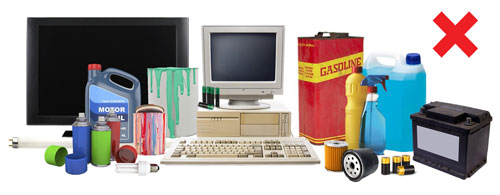What Goes Where
Every time you choose to recycle right, you’re giving that item a second life to serve a new purpose and save natural resources. Now more than ever, it’s important that only the right items, free from contamination, make their way into your recycling, organics and trash cart or bin.
Three Basic Rules
Knowing these rules and putting them into practice will help you recycle more efficiently and avoid contamination. And it will help to ensure everything that makes it into your bin finds a second life.

RULE 1
Recycle bottles, cans, paper and cardboard.

RULE 2
Keep food and liquid out of your recycling.

RULE 3
No loose plastic bags and no bagged recyclables.
What Goes in Recycling
Recycle only empty, clean and dry bottles, cans, paper and cardboard. Please check the website for your local area for more information about what is accepted in your recycling cart or bin.


Keep recyclables loose, do not bag. Plastic bags belong in the trash.
What Goes in Organics
Beginning in 2023, most locations throughout California will allow food scraps, food-soiled paper and yard debris to be placed together in an organics cart. Please check the website for your local area for more information about what is accepted in your organics cart or bin.


No recyclables, plastic, glass, metal, treated wood, hazardous waste, diapers, or pet waste.
What Goes in Trash
Non-recyclable plastics, polystyrene foam, diapers, pet waste, broken ceramics, plates, and glasses, chip, candy and other food wrappers, tanglers like hoses, wires, and hangers. Please check the website for your local area for more information about what is accepted in your organics cart or bin.
Large/Bulky Items
Please check the website for your local area for information about how you can dispose of large, bulky items like appliances, water heaters, furniture, mattresses, large quantities of yard waste and some home improvement materials.

Recycling for Schools
The most powerful habits and attitudes are created at an early age. Recycling can be one of them. Our recycling curriculum has been developed in alignment with STEM and the Next Generation Science Standards and includes all required materials and background information you need to create a recycling lesson plan for any classroom.
Recycling Resources for Kids

Recycle 101
Click here for more resources like posters, videos and recycling guides.
Watch this video to learn the basics on how to recycle right!


